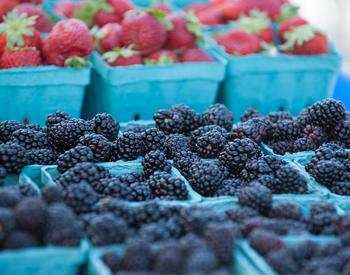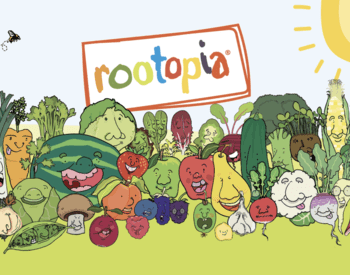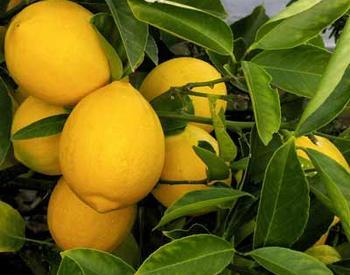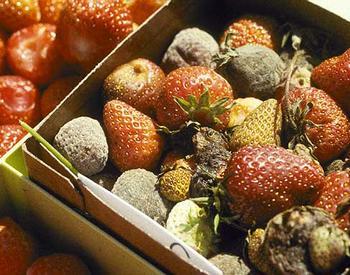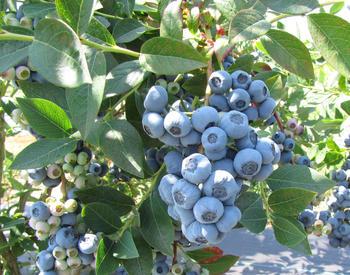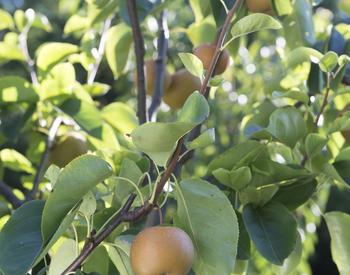CORVALLIS, Ore. – Eating the equivalent of one serving of red raspberries every day curbed weight gain in laboratory mice even when they ate an unhealthy, high-fat diet, researchers at Oregon State University found.
The mice also had lower indicators of metabolic problems like diabetes and fatty liver—conditions that afflict an increasing number of people in the United States.
It’s not news that raspberries are good for you, said coauthor Neil Shay, a researcher in OSU’s College of Agricultural Sciences. The surprise, he said, was that even a small amount—the equivalent of sprinkling a cup over your daily breakfast cereal—can pack big benefits.
“We were amazed to see the beneficial effect from the equivalent of a single serving per day,” he said.
The findings are the latest from a series of studies in which Shay and colleagues have fed “power foods” like raspberries, cherries, walnuts, green tea, and even red wine to lab mice, adding them to a fatty and sugary diet similar to the junk-food diet many Americans consume.
Raspberries are particularly powerful, said Shay. Rich in fiber, they also contain tannins, flavor and color compounds and other plant chemicals that, when ingested and metabolized, appear to reduce intracellular damage within cells, which may help cells repair themselves, as well as stimulating the body’s processing of fats and sugars.
The raspberry-fed mice had significantly less fat in their livers at the end of the ten-week study, and their blood glucose measure was statistically equivalent to that of a control group of mice fed a normal low-fat diet.
What’s more, the raspberry-fed mice were visibly slimmer than their counterparts that ate the same high-fat diet but didn’t get the raspberries. “You didn’t need to be a scientist to see the difference at the end of the study,” said Shay.
The research, funded by the National Processed Raspberry Commission, was published earlier this year in the journal Food & Function. Its findings confirm and extend what Shay and his colleagues found in a similar experiment two years ago, in which they fed mice the equivalent of four servings of red raspberries a day.
“Which is a pretty high amount,” Shay said. “As good as a fruit may taste to you, if you eat it in quantity every day, you’re going to get tired of it. We wanted to see how much we could lower the amount and still see the beneficial effects.”
In the recent study, he and his colleagues fed the mice a high-fat diet that resembled a human’s fatty, sugary, 2,000-calorie-a-day junk-food diet. Some mice also ate red raspberries in the form of either juice concentrate or puree concentrate.
The raspberry products accounted for about 2.5 percent of the mice’s daily calorie intake—the equivalent of about 1 cup of berries daily (50 calories) for a person. The rest of their diet was adjusted to account for the carbs and calories in the raspberries, so that all the study mice ate the same number of calories per day. A third group of control mice was fed a normal low-fat mouse diet.
All the study mice gained weight over the course of the study, but the ones that ate the raspberry products gained significantly less. At week 10, they weighed between 15 and 17 percent less than the mice that didn’t eat the raspberries.
Similarly, both groups developed fat in their liver tissue, but the raspberry-fed mice ended up with between 42 and 47 percent less liver fat than their raspberry-deprived counterparts.
Finally, the raspberries seemed to help the high-fat-fed mice regulate their blood glucose and blood insulin better. High levels of glucose and insulin in the blood are associated with diabetes and other metabolic disorders.
Blood glucose increased in the mice that ate the high-fat diet without the raspberries, but it stayed low in the high-fat-fed mice that got the raspberries; their blood glucose levels were “statistically indistinguishable” from those in the low-fat-fed control mice.
As for insulin, mice fed the raspberry juice concentrate had blood insulin levels that were statistically equivalent to those of the low-fat-fed control mice. Mice that got the raspberry puree also had lower levels of insulin, although not so low as those that got the juice concentrate.
The study dealt with mice, not humans, Shay cautioned. “We need more human studies to confirm the findings,” he said.
“Yet it’s becoming clear that, if people include these foods in their diet—cherries, raspberries, walnuts, green tea—in reasonable amounts, it’s going to benefit them. And there’s not a lot of downside associated with the consumption of these foods.”
